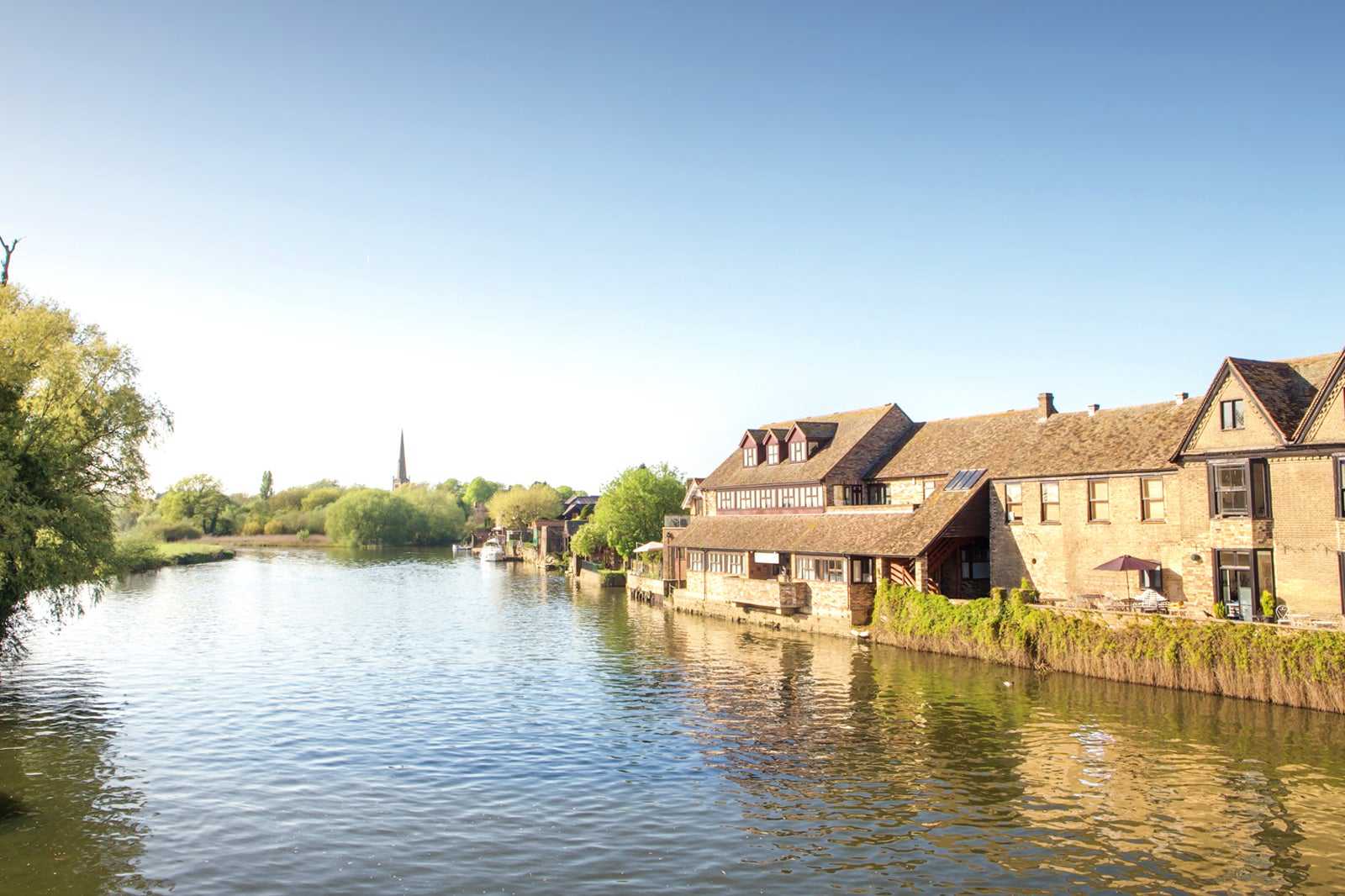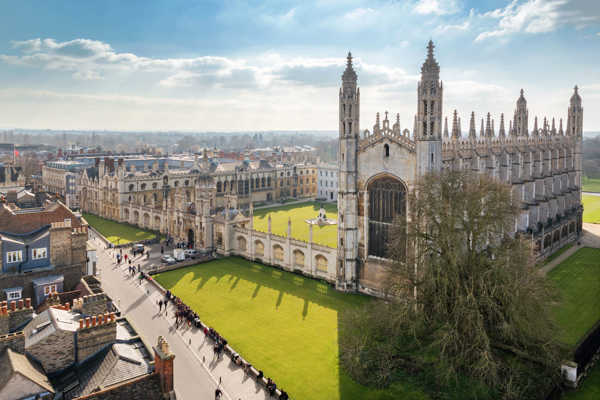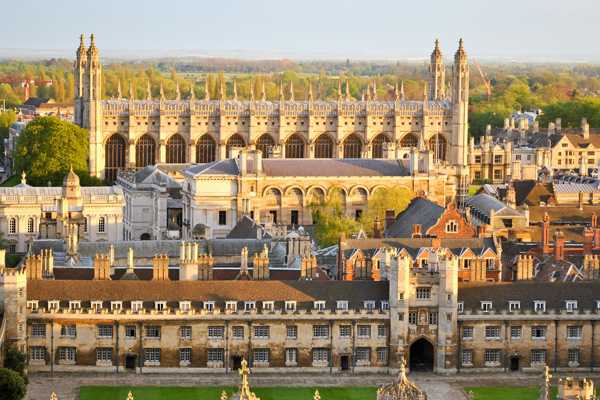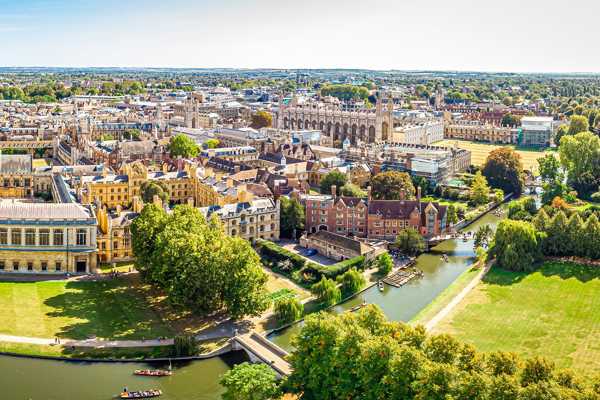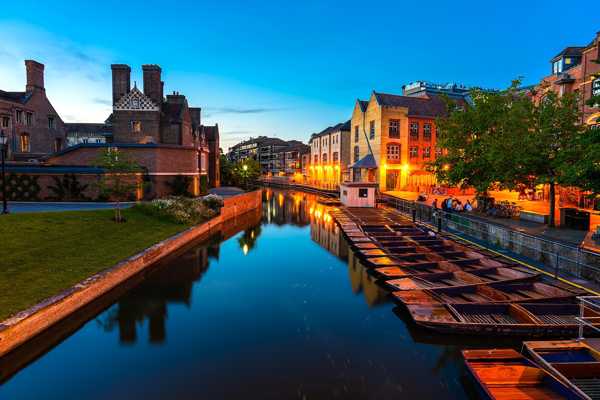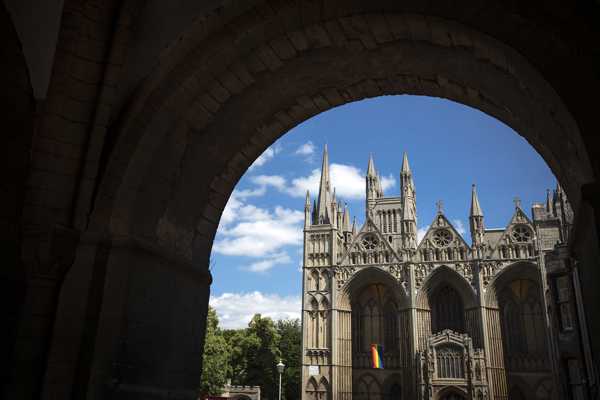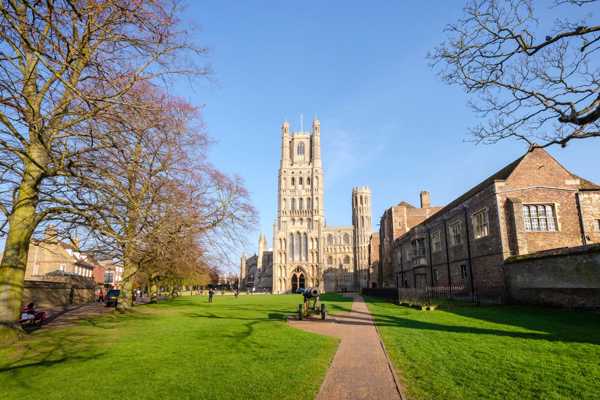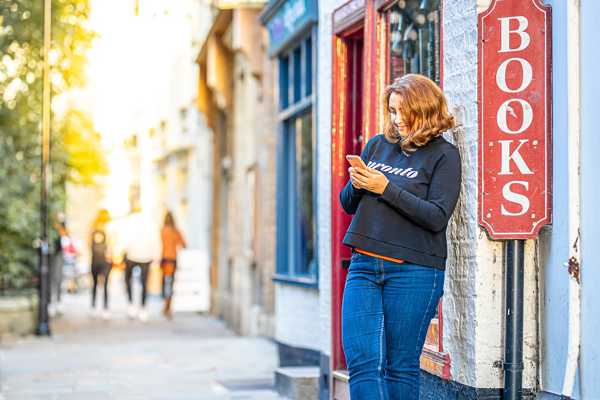Discover the most picturesque towns and villages in Cambridgeshire in under 90 minutes from London. The rural county is as far removed as you can get from the city some dub the Big Smoke. Rolling hills and flat green fields surround many picturesque towns and villages linked by walking trails and quiet country lanes.
The area has a rich history, as evidenced by archaeological finds and a wealth of architectural highlights from colourfully painted thatched cottages to centuries-old manor houses. Blessed with many pubs, cafés and tea rooms – not to mention museums, working windmills and even a vineyard – there’s plenty to recommend this part of East Anglia for a day trip or a longer stay.
- 1
St Ives
Visit a market town with an extraordinary bridge

- Aventure
- Histoire
- Photographie
St Ives is a pretty little market town on the River Great Ouse, between Huntingdon and Ely. Not to be confused with the town of the same name in Cornwall, Cambridgeshire’s own was called Slepe – in 1001 or 1002 AD, it changed its name to reflect the discovery of the body of St Ivo, the Cornish bishop and hermit, in the village.
One of the town’s more unusual landmarks is a 15th-century bridge that is only one of 4 in Britain to incorporate a chapel. It’s dedicated to St Leger, the patron saint of millers. Enjoy shopping in the market and socialising at the town’s riverside pubs. In summer, the water attracts stand-up paddleboarders and those hopping aboard boats for trips up to Hemingford Grey Lock.
Carte - 2
Buckden
Learn about a mansion built for the Bishops of Lincoln

- Histoire
- Photographie
Buckden is a charming village in Cambridgeshire that’s centred on Buckden Towers, formerly Buckden Palace. This fortified house was once the home of the Bishops of Lincoln, despite its distant location – one was even known as the “Bishop of Buckden who never saw Lincoln”. Catherine of Aragon, the first wife of King Henry VIII, also lived here for a time after he banished her from the court.
Today, this settlement is a far cry from the bustling coaching stop it once was, a peaceful backwater despite its proximity to the A1. Buckden Towers now hosts religious retreats and conferences. You can find several charming old houses and cottages in the centre of the village as well as several places to eat or sleep.
Carte - 3
Thorney
Explore a village that used to be an island

- Histoire
- Photographie
Thorney is a pretty village in Cambridgeshire that has retained much of its medieval charms. The land on which this village near Peterborough is situated started life as an island surrounded by fenland. Originally, it was the site for a monastery. In the 16th century under the ownership of the Earl of Bedford, the process of draining the surrounding land for agriculture commenced.
Thorney Heritage Museum is an interesting diversion for visitors to the village. Walloons from northern France settled in the 17th century, bringing their expertise and culture. While most of the housing comprises 19th-century terraces there are also some beautiful buildings such as Bedford Hall. Check out the 18th-century windmill while you’re there.
Cartephoto de Jenny Thorpe (CC BY 2.0) modifiée
- 4
Fulbourn
Check out a village which once boasted 5 manor houses

- Histoire
- Photographie
Fulbourn is a small town near the Gog Magog Hills that’s been settled since Neolithic times and takes its name from a nearby stream. A piece of artwork in granite erected in 2012, called the Fulbourn Life Wall, commemorates this and other aspects of the village’s long history.
The village is also worth checking out for its 19th-century smock mill, which opens about once a month for visitors. But don’t come to Fulbourn expecting Scottish grub – although there’s a street called the Haggis Gap, it’s named after a hole in a hedge through which a gentleman named Haggis used to squeeze.
Carte - 5
The Shelfords
Trace Barack Obama’s ancestors to this corner of Cambridgeshire

- Histoire
- Photographie
The Shelfords, as they are commonly referred to, comprise the 2 villages of Great and Little Shelford in Cambridgeshire. Great Shelford is the larger of the 2, but from both several pleasant walks lead to the surrounding countryside.
Great Shelford has hosted the Shelford Feast since medieval times. Traditionally it was a 3-day festival held in honour of St Mary the Virgin. Revived in the 1990s, these days it’s an annual event which features live music and stand-up comedy acts, as well as plenty of good food and drink. The proceeds go to charitable causes and there’s a great sense of community spirit. If they were still alive now, Barack Obama’s ancestors, Puritans who sailed to Massachusetts in the 1620s, might be sorry they left.
Cartephoto de John Sutton (CC BY-SA 2.0) modifiée
- 6
Linton
A stop on the Icknield Way Path, the oldest such trail in England

- Familles
- Histoire
- Photographie
Linton is home to Chilford Hall, one of England’s oldest vineyards, which tends approximately 17,000 vines on an 18-acre site. It hosts regular tastings for visitors to sample the wine from 9 varieties of grape produced on the fertile soils overlying the local chalk. If beer is more your thing, head down to the Dog and Duck pub, recognisable from its traditional thatched roof.
Kids will love to pay a visit to Linton Zoo. The zoo has a strong conservation focus and a commitment to breeding. Keeper experiences for both children and adults help to educate as well as entertain. Among the wildlife here are big cats such as lions and snow leopards, plus other species such as zebras, wallabies and lemurs.
Carte - 7
Fen Ditton
Watch boat races called The Bumps

- Histoire
- Photographie
Fen Ditton is a village on the east bank of the River Cam to the northeast of Cambridge whose name has Bronze Age origins. Fleam Dyke runs through the village – though the earliest written records spell it Ditton or “Ditch Town”. In today’s village, there are several thatched cottages as well as buildings which display pargeting, a style of wall plasterwork into which moulds are pressed to leave decorative patterns.
The Plough pub in the village provides one of the best vantage points to watch boat races known as The Bumps. It’s a tradition that’s been enjoyed for over a century. The River Cam is too narrow for boats to race side by side, so they line up behind one another; if one is touched by another, it’s forced to pull over to let it pass.
Carte - 8
Houghton & Wyton
Closely-knit twin villages that each offer historical charms

- Aventure
- Histoire
- Photographie
Houghton and Wyton, though technically 2 separate settlements in Cambridgeshire, are so close together they’re usually referred to as one place. They jointly run an annual music festival, for instance. These twin villages boast an assortment of farmworkers’ cottages and historic thatched properties in verdant surroundings.
Wyton has been home to an RAF base since World War One. Houghton is best known for something a little older: an 18th-century watermill run by the National Trust. Take a walk beside the Great Ouse or hike a couple of miles to Godmanchester Nature Reserve to fully appreciate the rural setting.
Cartephoto de Peter O'Connor (CC BY-SA 2.0) modifiée
- 9
Hemingford Abbots
Absorb the bucolic riverside scenery

- Histoire
- Photographie
Hemingford Abbots, on the River Great Ouse, is full to bursting with half-timbered buildings and thatched cottages. But this quaint little place has a much longer history – flints and a sarcophagus were discovered here that date back to Roman times.
Come to the village in summer when the village church of St Margaret of Antioch holds a popular flower festival. It’s also worth paying a visit to Hemingford Grey Manor. Built in the 1130s, it lays claim to being one of the oldest continually inhabited homes in the country. Visits to the house and its gorgeous gardens are by appointment only.
Cartephoto de Peter O'Connor (CC BY-SA 2.0) modifiée
- 10
Whittlesford
Take a peek at the Sheela Na Gig if you dare

- Histoire
- Photographie
- Insolite
Whittlesford is an attractive village situated south of Cambridge. It was first granted a market by Royal Charter in 1206 though there’s no longer sufficient demand to run it. Above the doorway of its church, eagle-eyed visitors will spot what’s known as a Sheela-na-gig. In Whittlesford’s case, it takes the form of shockingly explicit ancient depictions of a naked woman and man, thought to be a warning against the sin of lust.
The village hit the headlines in 2004 when curious crop markings akin to the white horses of Wiltshire appeared in a field nearby. There was some dispute whether the figure was carved by people into the underlying chalk or instead was the result of the sugar beet crop marking the soil.
Cartephoto de Marvinthefish (CC BY-SA 3.0) modifiée
